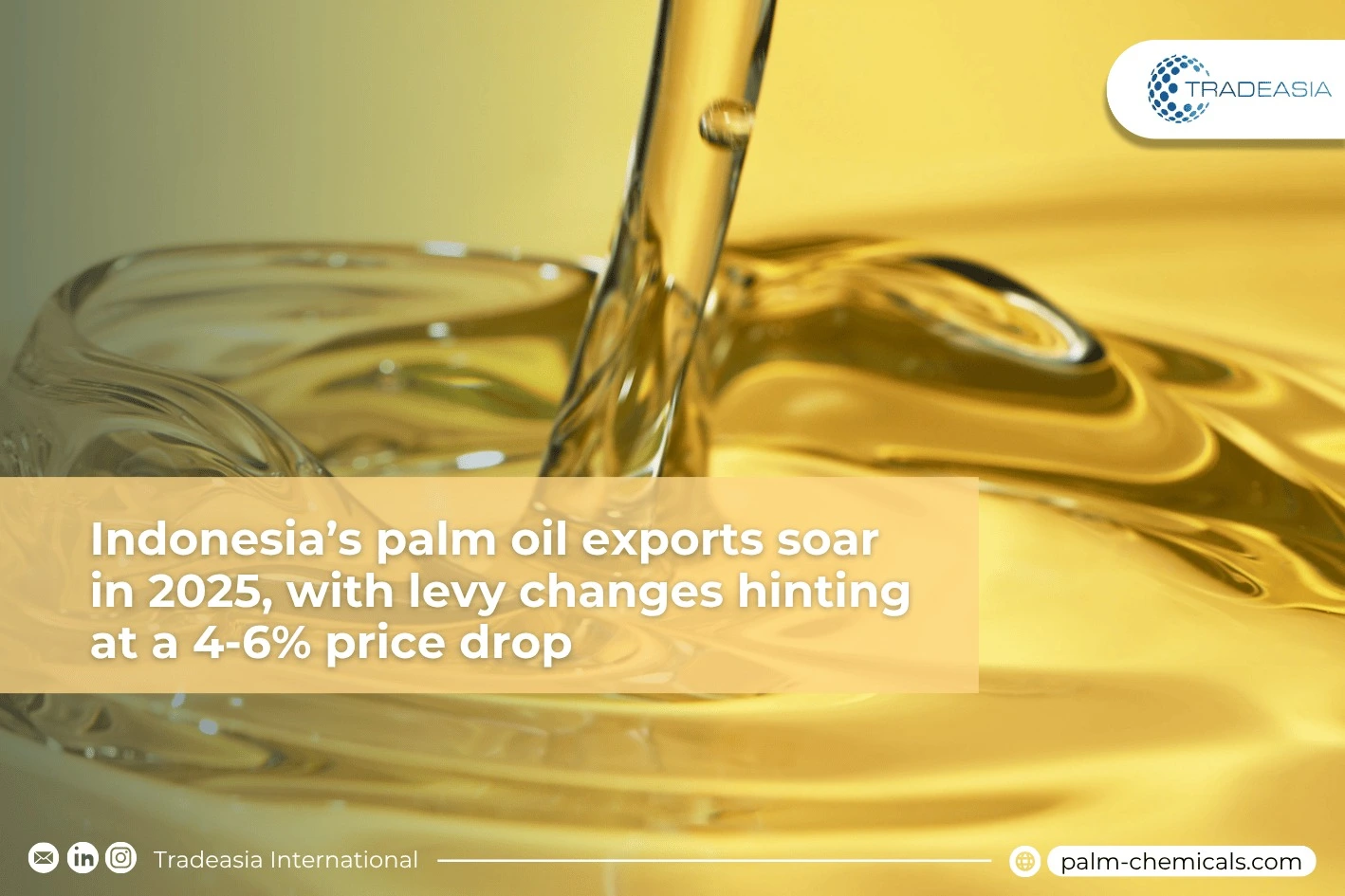Executive Summary:
- Indonesia’s palm oil exports showed significant growth in July 2025 based on initial estimates, signaling strong demand amid rising domestic inventories.
- A major overhaul in export levies and duties took effect on August 1, lifting the CPO reference price to $910.91/ton and reshaping costs for refined products.
- Market expectations suggest a 4–6% price decline for RBD Palm Olein and Stearin by mid-August, prompting early contract purchases from global buyers.
- Despite the expected short-term dip, tight global supply into Q4 2025 could support prices moving forward, making Indonesia’s strategic policy shifts highly impactful.
Riding the Export Wave: Indonesia Tightens Grip on Global Market
Indonesia’s palm oil industry continued its impressive momentum into July 2025, registering a significant month-on-month surge in export volumes based on preliminary data from GAPKI. This strong outbound performance coincides with swelling domestic inventories, now around 3 million tons at the end of June, reflecting an 8% rise since May amid robust production cycles. The export value in May alone reached a notable $2.82 billion, with similar strength projected through July. Adding fuel to this upward trajectory, Indonesia’s access to European buyers is widening in H2 2025 under the IEU-CEPA agreement, placing the world’s largest palm oil producer in a powerful position to deepen its foothold in lucrative EU markets.

Against this optimistic backdrop, the government has moved decisively. From August 1, a revamped pricing and taxation policy has been rolled out for Crude Palm Oil (CPO) and its derivatives. The revised CPO reference price is set at $910.91/ton, up 3.76% from July’s $877.89, reflecting heightened buying interest from India and China. Correspondingly, the export duty (BK) stands at $74/ton, with the levy (PE) calculated at 10%, or $91.09/ton. Refined products have also seen adjustments, RBD Palm Olein duty rose sharply from $2/ton to $12/ton, while Palm Stearin moved to $4/ton. Biodiesel, however, remains duty-free to bolster domestic energy initiatives
Price Reset or Buying Opportunity? Global Players Make Their Move
Traders and analysts anticipate that the new cost structure will trigger a 4–6% decline in RBD Palm Olein and Stearin prices over the next 2–4 weeks, as exporters recalibrate their pricing strategies. Early signs are emerging, as of August 1, benchmark palm oil futures were at 4,292 MYR/ton, marking a 4.48% monthly gain but showing softness immediately after the levy announcement. Domestically, RBD Palm Olein prices hover around $1,020/ton, staying just under Malaysia’s $1,130/ton, keeping Indonesian suppliers competitively positioned in international markets.
Anticipation of mid-August price cooling, combined with the seasonal rally typically seen in September–October, especially by food and oleochemical sectors, has sparked a wave of early contract bookings. Strategic buyers in India, China, and the EU are locking in supplies now, aiming to hedge against volatility and secure stock ahead of any upswing.
Looking further ahead, while Indonesia’s policy agility underscores its strategic grip over pricing and supply, weather-related pressures across Southeast Asia are expected to constrain global palm output through to Q4 2025. This suggests any mid-August price correction may be short-lived, reinforcing Indonesia’s role as a hands-on market stabilizer with a keen eye on both domestic balance and international influence.

Leave a Comment